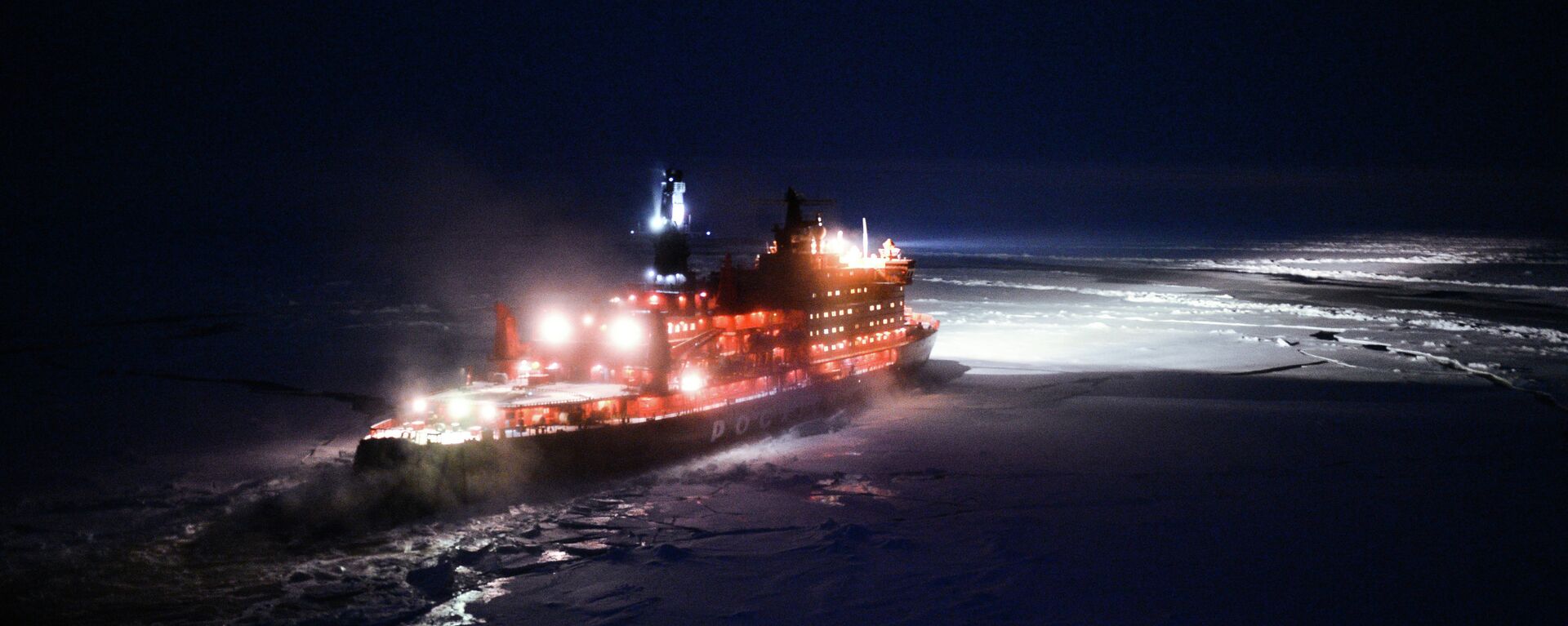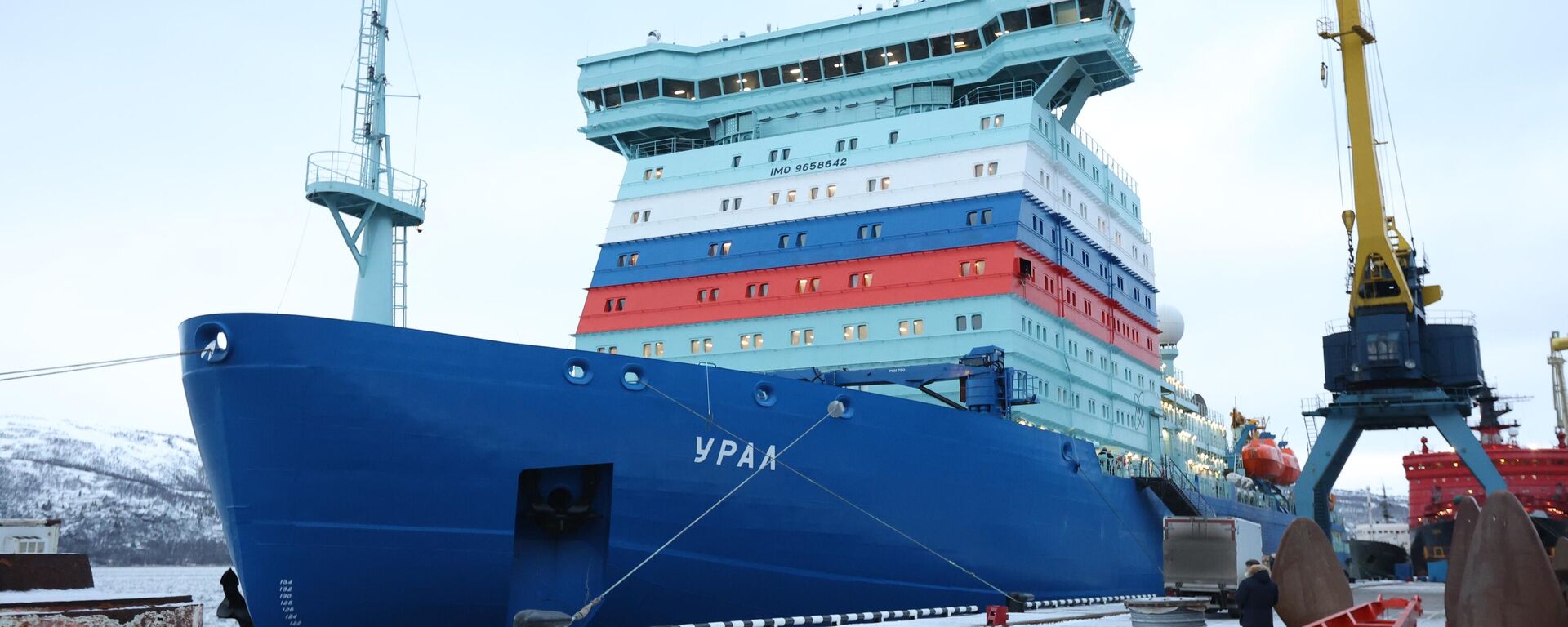https://sputnikglobe.com/20240828/why-us-led-ice-pact-wont-help-nato-match-russias-arctic-superpower-status-1119939828.html
Why US-Led ICE Pact Won’t Help NATO Match Russia’s Arctic Superpower Status
Why US-Led ICE Pact Won’t Help NATO Match Russia’s Arctic Superpower Status
Sputnik International
The US and its allies have announced a major new initiative to try and narrow the gap between the West and Russia's heavy icebreaker capabilities as the Arctic competition continues to heat up.
2024-08-28T15:39+0000
2024-08-28T15:39+0000
2024-08-28T15:39+0000
military & intelligence
arctic
russia
finland
nato
uscgc healy
northern sea route
https://cdn1.img.sputnikglobe.com/img/07e8/08/1c/1119939987_0:160:3074:1889_1920x0_80_0_0_5089809a0790e751aff227d80c8e5d84.jpg
The addition of Sweden and Finland into NATO has not helped the alliance in its quest to challenge Russia’s superiority in the Arctic. Meanwhile, the US icebreaker fleet is falling further and further behind, with a major fire aboard the USCGC Healy, America’s largest and most sophisticated icebreaking vessel, on July 25 resulting in the cancellation of its Arctic mission.Ambitious plans by successive administrations in Washington to bolster the capabilities of the US icebreaker fleet have failed to materialize. To this end, last month, the US, Canada and Finland announced an ‘Icebreaker Collaboration Effort’ (ICE Pact) initiative – with the ultimate aim of building some 70-90 vessels over the next decade.The US lag behind Russia in icebreaker technology comes down to history and modern geopolitical factors, says Alexander Vorotnikov, coordinator of the Russian Project Office for the Development of the Arctic and associate professor at the Institute of Social Sciences at the Russian Presidential Academy of National Economy and Public Administration.Even as the US and its allies expand their icebreaker ambitions, Russia will remain one step ahead, the observer assured, since its icebreaker fleet (whose size already exceeds 45 large conventional and nuclear-powered icebreakers) will only continue to grow, with two new massive Project 22220 ships – the Stalingrad and the Leningrad, now under construction.Washington’s move to turn to Finland and Canada for assistance is not a bad idea, according to Vorotnikov, who pointed out that Finland historically has been an important icebreaker-building power in its own right – delivering several dozen icebreakers to the USSR in its own time. Canada too has respectable icebreaker construction and operation experience owing to its large Arctic frontiers.Therefore, the US – which lacks experience or shipyards suitable for Arctic-class icebreakers, can simply dump money into the initiative.That said, the observer stressed that even together, these countries lack Russia’s Arctic “know-how,” from its experience using drifting ice stations, to knowledge on ice floes’ movement, unique knowledge of local weather, and information gleaned from decades of long-term observations by polar stations.
https://sputnikglobe.com/20240317/on-thin-ice-us-falling-behind-russia-in-mobility-in-arctic-region-1117374753.html
https://sputnikglobe.com/20240211/worlds-top-five-mightiest-icebreaker-fleets-1116728280.html
arctic
russia
finland
Sputnik International
feedback@sputniknews.com
+74956456601
MIA „Rossiya Segodnya“
2024
News
en_EN
Sputnik International
feedback@sputniknews.com
+74956456601
MIA „Rossiya Segodnya“
Sputnik International
feedback@sputniknews.com
+74956456601
MIA „Rossiya Segodnya“
can us catch up to russia in icebreaker construction, can nato match russia in the arctic, why can't west match russia in the arctic
can us catch up to russia in icebreaker construction, can nato match russia in the arctic, why can't west match russia in the arctic
Why US-Led ICE Pact Won’t Help NATO Match Russia’s Arctic Superpower Status
The US and its allies have announced a major new initiative to try and narrow the gap between the West and Russia's heavy icebreaker capabilities as the Arctic competition continues to heat up. A leading expert on Arctic affairs told Sputnik why NATO has no hope of catching Russia's momentum.
The addition of Sweden and Finland into NATO has not helped the alliance in its quest to challenge Russia’s superiority in the Arctic. Meanwhile, the US icebreaker fleet is falling further and further behind, with a
major fire aboard the USCGC Healy, America’s largest and most sophisticated icebreaking vessel, on July 25 resulting in the
cancellation of its Arctic mission.
Ambitious plans by successive administrations in Washington to bolster the capabilities of the US icebreaker fleet have
failed to materialize.
To this end, last month, the US, Canada and Finland announced an ‘Icebreaker Collaboration Effort’ (ICE Pact) initiative – with the ultimate aim of building some 70-90 vessels over the next decade. The US lag behind Russia in icebreaker technology comes down to history and modern geopolitical factors, says Alexander Vorotnikov, coordinator of the Russian Project Office for the Development of the Arctic and associate professor at the Institute of Social Sciences at the Russian Presidential Academy of National Economy and Public Administration.
That’s because while “we need these icebreakers to service the Northern Sea Route, which is critically required not only for cargo transit, but providing our northern territories with freight. The US has never had such tasks. They have only one Arctic-facing state – Alaska. There is no ice in the contiguous United States. Therefore, they did not need them as much as we did. Therefore, a situation developed in which we have many icebreakers, and they have few,” Vorotnikov explained.
Even as the US and its allies expand their icebreaker ambitions, Russia will remain one step ahead, the observer assured, since its icebreaker fleet (whose size already exceeds 45 large conventional and nuclear-powered icebreakers) will only continue to grow, with two new massive Project 22220 ships – the Stalingrad and the Leningrad, now under construction.
Washington’s move to turn to Finland and Canada for assistance is not a bad idea, according to Vorotnikov, who pointed out that Finland historically has been an important icebreaker-building power in its own right – delivering several dozen icebreakers to the USSR in its own time. Canada too has respectable icebreaker construction and operation experience owing to its large Arctic frontiers.
Therefore, the US – which lacks experience or shipyards suitable for Arctic-class icebreakers, can simply dump money into the initiative.

11 February 2024, 17:46 GMT
That said, the observer stressed that even together, these countries lack Russia’s Arctic “know-how,” from its experience using drifting ice stations, to knowledge on ice floes’ movement, unique knowledge of local weather, and information gleaned from decades of long-term observations by polar stations.
“No one else has this. Only Russia has all of this knowledge together,” Vorotnikov summed up.



